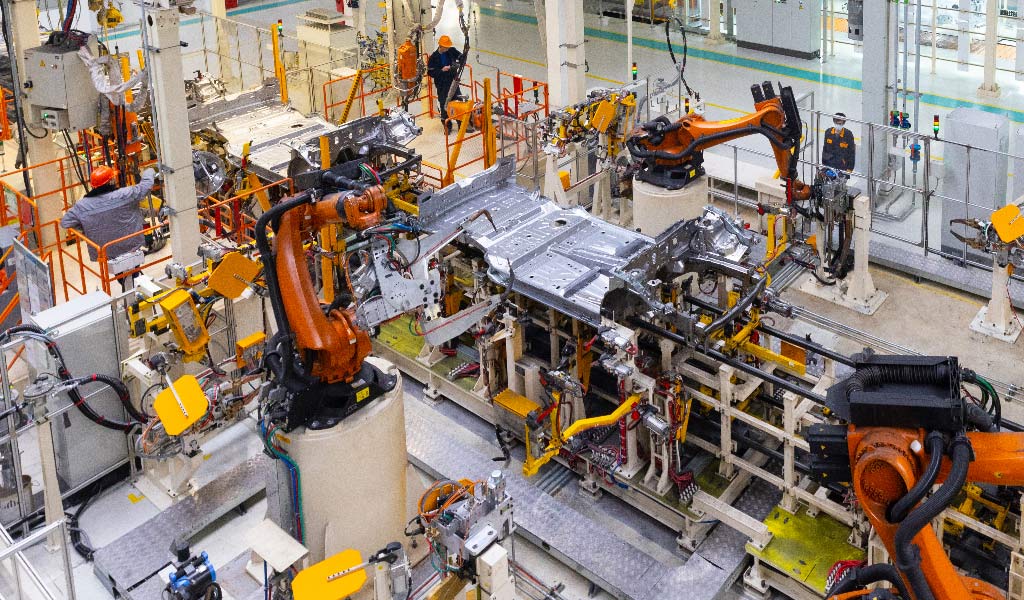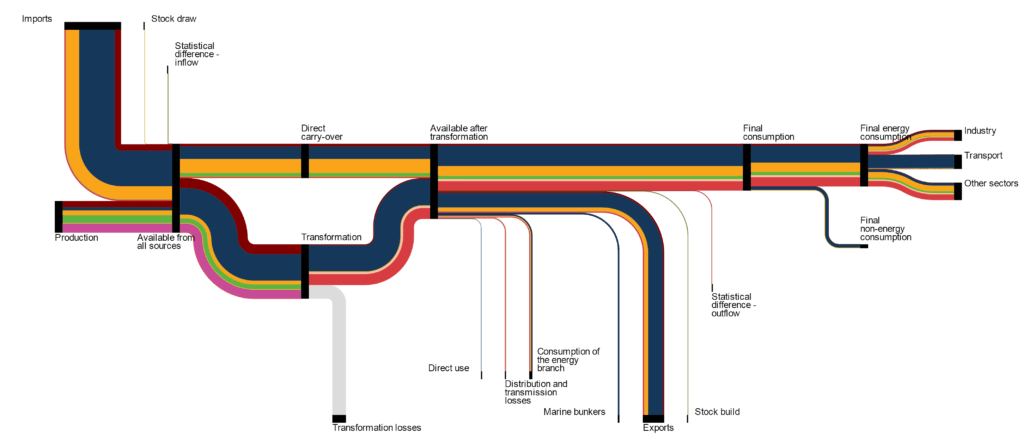Targets for the reduction of greenhouse gas emissions in industry have long existed, but international instability and soaring energy prices have pushed energy efficiency to the top of the priority list.
Automation can be an important factor in this regard, and this article explains why.

The energy problem in industry
The final energy consumption of industry in Europe is 26.1% (Source: Eurostat), while in Spain it accounts for 31% of our energy (Source: IDAE), mainly corresponding to the manufacturing industry. These industries are big consumers of electricity and gas, so they have been hit hard by rising energy costs.
In this context, the goal of becoming more energy efficient is not only a matter of reputation, marketing or corporate social responsibility. It is more a question of survival. Moreover, according to some indicators, energy prices will continue to rise in the coming years, so companies are looking for ways to cushion this impact.
And one of the possible solutions is automation to improve the energy efficiency of the manufacturing industry.
The final energy consumption of industry in Europe is 26.1%, while in Spain it accounts for 31% of our energy
The energy benefits of automation
It should be made clear that improving energy efficiency does not mean producing less (and hence consuming less energy), but rather improving productivity and efficiency to produce the same amount using less resources. This has two important implications for industry.
The first concerns profitability. Energy costs are a major item in many industries. Therefore, any strategy aimed at cost reduction must include energy efficiency initiatives.
The second concerns sustainability. We have had increasingly stringent environmental regulations in place for some time now. In this respect, actions aimed at energy efficiency help to reduce the levels of emissions from industrial activity.
How can automation improve energy efficiency?
There are different complementary strategies to meet the challenge of improving energy efficiency. One of them is to improve energy efficiency from a holistic perspective of industrial processes and their optimisation. This is where process automation can help to improve the energy efficiency of an industrial plant through better monitoring and optimisation:
- Reduction of waste due to less variability in processes and a lower volume of defective parts.
- Reduced downtime (and consequently start-ups) due to better preventive and predictive maintenance practices.
- Optimisation of production flows taking into account energy consumption, a criterion that is not normally considered.
- Management of equipment usage times according to consumption and electricity prices (peak or off-peak rates).
- Less energy consumption per manufactured part by reducing lead times.
In short, greater flexibility and process autonomy makes it possible to manage a variable (energy consumption) that in rigid process scenarios or those dependent on other factors (such as operator shifts) is very difficult to manage.
Improvements in energy efficiency through productivity are closely linked to technological innovation, the application of digital solutions and automation.
Better production processes mean less energy consumption
Integral process control systems, such as our MIC platform, can be more cost-effective than replacing equipment, leading to other benefits in terms of quality, information management, etc.
On the contrary, if there is no good control system or the process has a high variability, no matter how efficient the equipment is, the overall energy balance (value produced in relation to the resources consumed) will not be good. Repeating faulty production is a waste of energy.
Automated processes allow you to act on the causes in real time.
There are still many organisations that do not have monitoring tools capable of providing real-time data on their production processes and energy consumption. And even fewer have systems that allow advanced process control based on this data to adopt appropriate strategies to reduce energy consumption.
Having a system in place to collect data on what is happening on the shop floor allows you to identify the main energy consumption sources. This is where automated processes become necessary in order to optimise flows and tasks in real time, taking into account the energy consumption variable.
Smart automation is the key to achieving energy efficiency.
Achieving real efficiency in industry involves the application of automation from a global perspective. In other words, improvement is not achieved by implementing independent solutions here and there, but by properly integrating and connecting all parts.
Having a central system that analyses key information in real time allows for proper synchronisation and management of resources, optimised planning and better use of all information for decision-making.

What savings can automation bring?
The energy impact of automation depends on many factors and is not always easy to assess, although it is estimated that savings can range from 10-30% of energy costs, according to the International Energy Agency.
Therefore, automation and the implementation of digital solutions are something to consider, especially in periods when energy costs are soaring. Implementing solutions of this type can help improve productivity, with a very short return on investment.
SMARTPM offers smart automation solutions and optimisation of industrial processes in the field of precision machining. If you think we can help you, do not hesitate to contact us.
Header photo: Freepik – usertrmk
